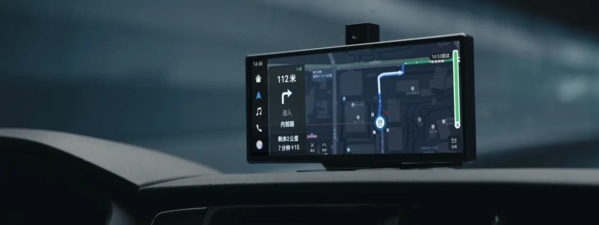Input 2020.12.30 06:00
Following the release of the smart car platform’Hi Car’ in October
Simultaneous introduction of smart screen and 150m thin lidar
Distance from vehicle manufacturing… Acceleration
Reorganization centered on the future infrastructure… “The ripple power is questionable”
On the 21st (local time), Huawei unveiled the first smart screen for vehicles with built-in Honghu chip developed by itself. It has been a month since it sold’Honor’, its own mid-to-low-end smartphone brand, after US sanctions.
China’s economic media, Chai-Shin, analyzed that Huawei has chosen a strategy that focuses on supplying smart car parts rather than making smart cars based on smartphone know-how. In a document titled’Resolution on Smart Car Parts Business Management’, released to the Chinese media in November, “Huawei does not make cars, but it will help automakers make good cars by collecting ICT technology.” Revealed.
Smart cars are cars that provide a high degree of safety and convenience by fusion of electric, electronic and communication technologies. It is also called a’connected car’ because it is always connected to the communication network.
The smart screen allows users to use not only the main functions of the smartphone, but also various services provided by Huawei when the smartphone and the vehicle are connected. It is also the first vehicle component to be linked with Huawei’s smart car platform’Hi Car’.

On the same day, Huawei also officially introduced a high-performance LiDAR for vehicles. Lida, which detects objects by sending lasers, is considered a core technology of autonomous driving technology. Huawei’s Lida is said to have the capability to detect pedestrians, vehicles, and high-speed vehicles within 150m with 96 beams.
As the war for technological supremacy between the US and China continues, Huawei is striving to dominate the next-generation smart car market. It is predicted that the supply and demand of semiconductors essential for 5G (5th generation mobile communication) network equipment and smartphones, which are the current core business, will continue to be blocked, and it is analyzed that it has turned to the smart car market.
In fact, Huawei simultaneously unveiled its hi-car platform at the end of October, when it announced its first strategic premium smartphone’Mate 40′ since the US’ high-intensity sanctions began in September. Hicar is a platform that connects smart devices and vehicles as a counterhorse of Google’s Android Auto. This platform not only allows users to access music, maps, and mails in smartphones from the vehicle, but also connects various systems and sensors installed in the vehicle to provide digital services such as vehicle management and diagnosis.
Huawei estimates that the value of ICT (Information Communication Technology) in vehicles will be 70% in the future. It is also confident that it will install hicars on more than 5 million cars through partnerships with more than 20 automakers.

However, in the industry, there are doubts about how well Huawei’s ambition to become China’s leading vehicle platform company will be successful.
Forbes analyzed, “As seen from the sale of Honor, there is a high possibility of making a so-called’mini Huawei’ with a business center that is less likely to be sanctioned by the United States,” and “next time, the reorganization movement in automobiles will inevitably appear.” “I don’t know the local market in China, but I don’t have a dominant position to lead the market outside of China,” he pointed out.
It is true that many automobile industries around the world, such as the United States and Europe, are struggling to create an ecosystem such as electronic parts, semiconductors, and batteries as they take steps to go to smart cars such as electric vehicles, but it is not easy for these companies to join hands with Huawei.
SK Securities director Kim Young-woo said, “Compared to Apple having all of the operating systems, semiconductors, and modem chips (communication chips) that can be called the framework of a smart car, Huawei is unable to obtain modem chips due to US sanctions, and designs semiconductor chips. However, since there is no place to produce it, it will not be easy to get attention in the market.”
